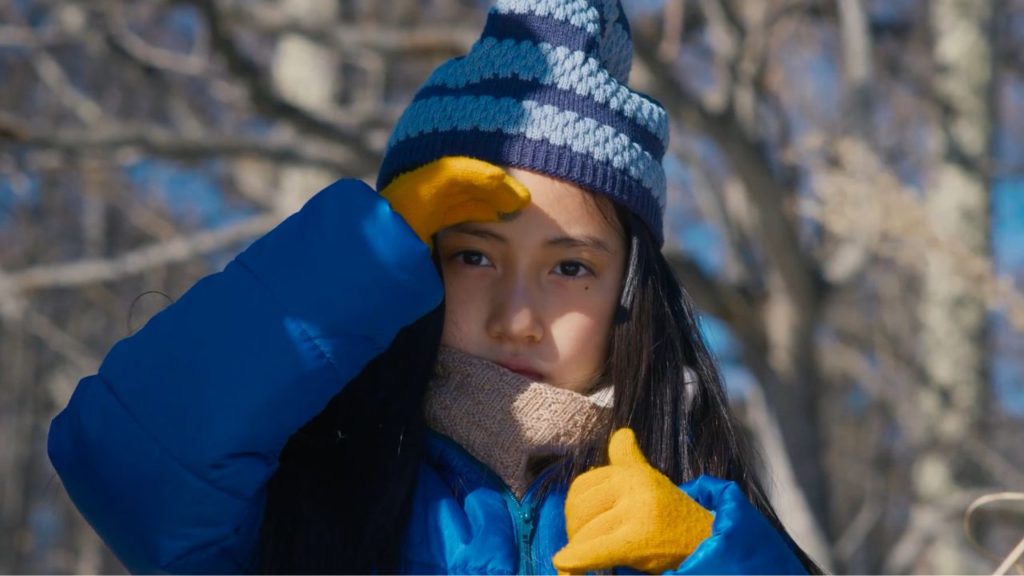Perhaps Ryusuke Hamaguchi really is one of the greatest directors of our time. His ability to straddle both commercial and arthouse filmmaking with such finesse is no easy feat. If you’ve only heard of him through Drive My Car – and honestly, outside of Japan who can really blame you – Evil Does Not Exist, might come as somewhat of a rude awakening.
While not the most commercial of his works, Drive My Car is still quite easily digestible. It’s an easy access arthouse if you will. Evil Does Not Exist, however, is all in on the arthouse front. So strap in because you’re in for a bumpy ride…
Fight the Future

Partially based on real events, Evil Does Not Exist tells the story of Takumi – a single father trying to raise his daughter in the rural village of Harasawa, and what happens when a random talent agency, hoping to cash in on post-pandemic government grant money, proposes to set up a glamping site in the village. (Incidentally, Harasawa, where the film is set and shot, is also where Eiko Ishibashi, composer for the score of both this and Drive My Car, makes most of her music.)
The genesis of this film is also a story in itself. After working together on Drive My Car, Ishibashi asked Hamaguchi to put visuals to some of her music, and it took him nearly a year to figure out that she really would accept anything he wanted to do with it. What started out as a 30 minute “music video” morphed into this 106 minute meditation on the eternal struggle between progress and what it means to live with nature. (It is also worth noting that Hamaguchi did actually make a 30 minute dialogue-less piece called Gift, which premiered at Belgium’s Film Fest Gent featuring a live accompaniment by Ishibashi in October 2023)
Perhaps a true testament to Hamaguchi’s genius is that he went into production for this film in February of this year and then premiered it at Venice International Film Festival in September – a mere 7 months later. Admittedly, the film is visually straightforward, but the speed at which Hamaguchi and Ishibashi were able to collaborate, going back and forth between music and visuals, is still pretty astounding. As a result, Evil Does Not Exist feels incredibly atmospheric, and one can get easily lost in the haunting and stark landscape put to the incredibly moving accompaniment of Ishibahi’s score.
Cinéma Vérité

What makes this film even more impressive is that its lead Hitoshi Omika, who plays Takumi, is not an actor. Omika has previously worked with Hamaguchi as a crewmember in various capacities over the years (most recently on this very production as the driver during location scouting), only to be told by Hamaguchi that he had been cast as the lead. Despite this being his first time in a leading role, and perhaps due to his long standing working relationship with Hamaguchi, Omika’s performance gives the right amount of gravitas and awkwardness to the film.
Omika’s performance betrays the self-consciousness of someone ever so slightly uneasy in front of the camera, but manifests itself as a deadpaness in line delivery. One might attribute this performance to bad acting, were it not an affectation adopted by the entire cast of villagers as well. This makes it feel like Hamaguchi has populated his film with actual villagers who have been roped in against their will, and who don’t quite understand what’s so interesting about their lives that you’d want to film them. This unease and awkwardness then gives the film an almost documentary-like feel, which in turn plays into the story of the film – of a village wary of the encroachment of “progress” and modernity. It makes us, the audience, a part of said encroachment.
As Inscrutable as Mother Nature

After parsing through some of the director’s earlier works, what comes through very clearly is that when left to his own devices, Hamaguchi is really able to zero in on human stories. But while in these other works, Hamaguchi excels at relaying to the audience the unbridled human experience, in Evil Does Not Exist, his characters’ thoughts and motivations are sometimes less than clear.
This is most likely by design, as these seem less like characters and more like real people. How much can we really know about what another human being is actually thinking? It is in this distance that Hamaguchi has placed between us and these characters where the film seems to fall a bit short, making for a less than cathartic experience that one has come to expect from him.
Aside from being an eco-fable – as this is touted to be by many – perhaps Hamaguchi would like us to come face-to-face with the unfathomable aspects of nature itself. As exhibited by a very abrupt tonal and character shift in the film’s final moments. It’s a shift so jarring that it has left critics divided and scrambling to try and make sense of it. A meditation on the film, its affectations, music, and scenic landscape might yield an answer, but I feel like trying to tease out any cathartic meaning from this film might be pointless. Because that just doesn’t seem to be what Hamaguchi is going for with Evil Does Not Exist. So I’m just gonna take the “high road,” accept it for what it is, and leave you, prospective viewer, with this: Nature is cruel, and cruel is not necessarily evil.









Follow Us